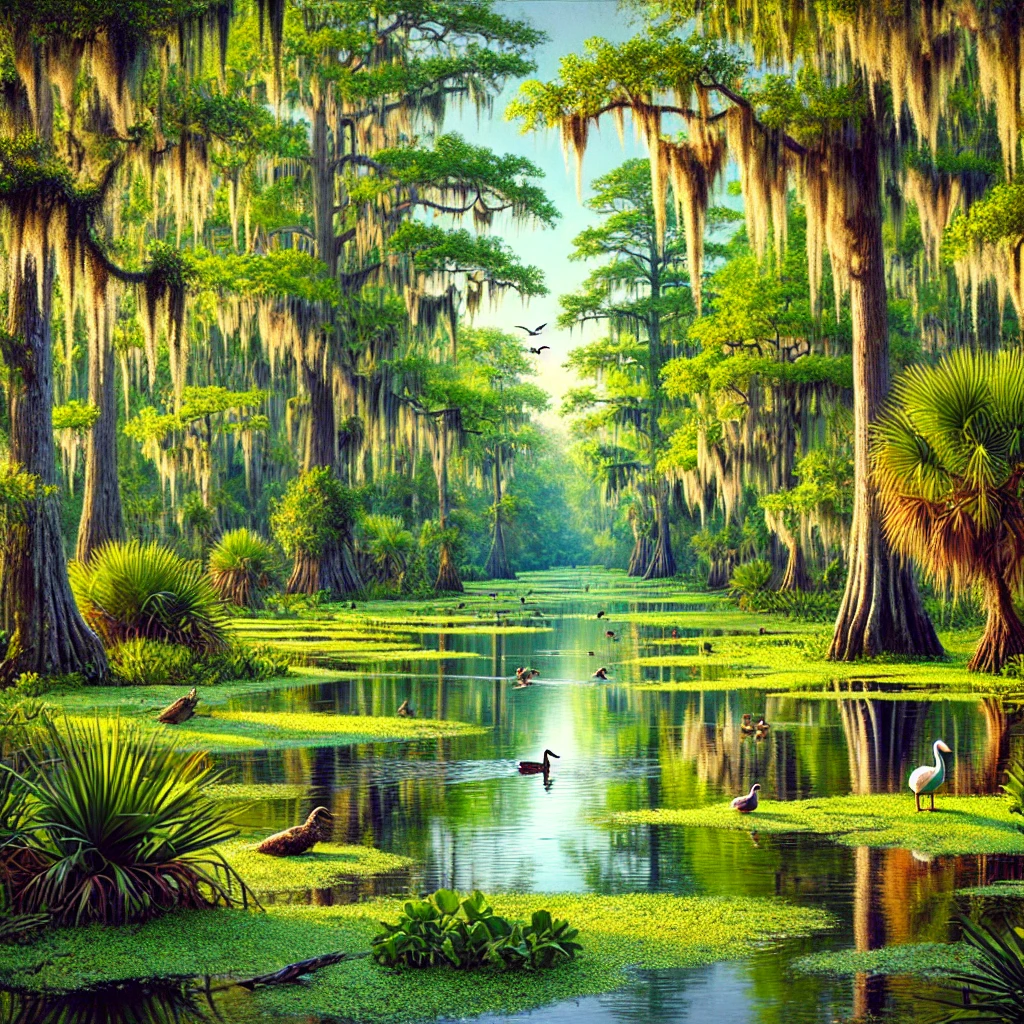
Southern United States swampy areas are far more than just wetlands; they are ecological treasures that play a vital role in maintaining environmental balance. From their ability to filter water to supporting diverse species, these wetlands have gained attention for their significance, with publications like the New York Times emphasizing their importance. This article dives into the natural beauty, ecological contributions, and cultural value of these unique regions.
Understanding Swampy Areas in the Southern US NYT
Swampy areas are wetlands characterized by their saturated soils, slow-moving waters, and dense vegetation. Prominent examples in the southern US include the Everglades in Florida, the Okefenokee Swamp in Georgia, and the Atchafalaya Basin in Louisiana. These areas are home to a rich tapestry of life, ranging from alligators and wading birds to unique plant species like cypress trees and Spanish moss.
Ecological Importance of Southern Swamps
1. Biodiversity Hotspots
Swamps are some of the most biologically diverse ecosystems in the world. These wetlands support thousands of species, many of which are endemic or endangered. For example, the Louisiana black bear and the Florida panther rely on swamps for their survival.
2. Natural Water Filters
Swampy areas act as nature’s kidneys, filtering pollutants from water and improving its quality before it flows into rivers, lakes, or the ocean.
3. Combatting Climate Change
Swamps store large amounts of carbon dioxide in their waterlogged soils, helping to reduce greenhouse gas levels. Their role in carbon sequestration makes them essential in combating climate change.
4. Flood Mitigation
These wetlands absorb excess rainwater and reduce the impact of flooding in nearby areas. In regions prone to hurricanes, swamps act as natural buffers, protecting communities from storm surges.
Cultural and Historical Significance
Swampy areas hold deep cultural and historical value in the southern US. They have been home to Native American tribes for centuries, offering sustenance, shelter, and spiritual significance. Additionally, these wetlands feature prominently in Southern folklore, art, and literature, adding to their mystique and cultural richness.
Also Read: Rita M. DeBonis Concord NH: A Gift of Compassion and Dedication
Tourism and Recreation in Southern Swamps
Eco-Tourism Opportunities
Swamp tours have become popular, with guided boat rides allowing visitors to experience the beauty of these wetlands up close. Wildlife enthusiasts often flock to these areas for birdwatching and photography.
Fishing and Hunting
Swamps are prime locations for recreational fishing and hunting. Species like catfish, bass, and waterfowl are abundant in these ecosystems.
Educational Value
Swampy areas serve as outdoor classrooms, offering lessons in ecology, conservation, and the interconnectedness of ecosystems.
Threats to Swampy Areas in the Southern US NYT
Despite their importance, Swampy Areas in the southern US NYT face numerous threats:
1. Urban Development
As cities expand, wetlands are drained and converted into residential or industrial areas, leading to habitat loss.
2. Pollution
Runoff from agriculture and industrial waste contaminates swamp waters, harming plant and animal life.
3. Climate Change
Rising sea levels and changing weather patterns threaten the delicate balance of swamp ecosystems.
4. Invasive Species
Non-native plants and animals, such as the Burmese python in the Everglades, disrupt the natural ecosystem, outcompeting native species.
Conservation Efforts for Swampy Areas in the Southern US NYT
1. Federal and State Protections
Wetlands are protected under laws like the Clean Water Act, which regulates pollution and development in these areas.
2. Restoration Projects
Efforts to restore degraded swamps, such as replanting native vegetation and removing invasive species, have seen success in regions like the Everglades.
3. Community Involvement
Local communities play a vital role in preserving these ecosystems by participating in cleanup drives and advocating for sustainable practices.
4. Promoting Eco-Friendly Tourism
Encouraging responsible tourism helps generate funds for conservation while minimizing the environmental footprint.
FAQs About Swampy Areas in the Southern US NYT
1. What defines a swampy area?
Swampy areas are wetlands with saturated soil, standing water, and abundant vegetation, often home to diverse wildlife.
2. Which southern swamps are most famous?
Notable swamps include the Everglades in Florida, Okefenokee Swamp in Georgia, and the Atchafalaya Basin in Louisiana.
3. Why are swamps important?
They support biodiversity, filter water, store carbon, and protect against floods, making them vital ecosystems.
4. What threats do swamps face?
Urbanization, pollution, climate change, and invasive species pose significant challenges to swamp preservation.
5. How can we protect southern swamps?
Through conservation laws, restoration projects, community efforts, and sustainable tourism, we can ensure their survival.
Conclusion
Swampy Areas in the Southern US NYT are more than just wetlands—they are lifelines for the environment and symbols of cultural heritage. From their ecological contributions to their place in Southern identity, these ecosystems deserve greater recognition and protection. As the New York Times has highlighted, preserving these areas is essential for future generations to appreciate and benefit from their unique beauty and value.







